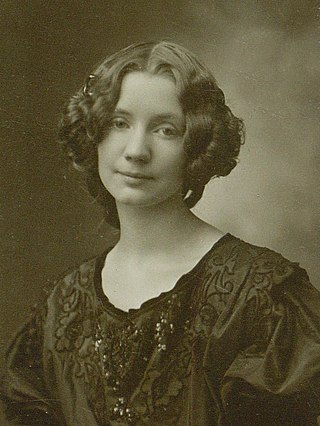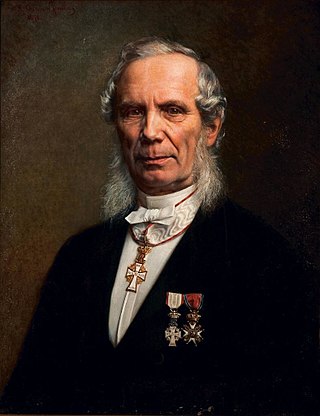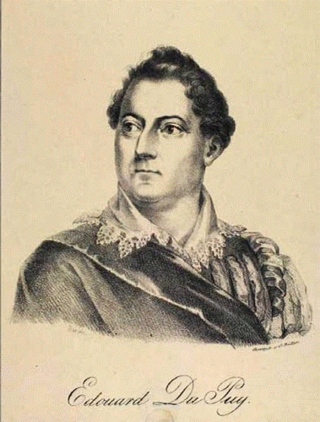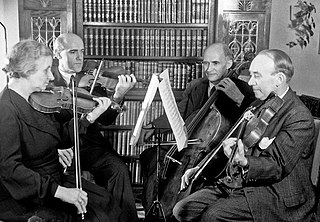Related Research Articles

Niels Wilhelm Gade was a Danish composer, conductor, violinist, organist and teacher. Together with Johan Peter Emilius Hartmann, he was the leading Danish musician of his day, in the period known as the Danish Golden Age.

Agathe Ursula Backer Grøndahl was a Norwegian pianist and composer. Her son Fridtjof Backer-Grøndahl (1885–1959) was also a pianist and composer, who promoted his mother's compositions in his concerts.

Per Nørgård is a Danish composer and music theorist. Though his style has varied considerably throughout his career, his music has often included repeatedly evolving melodies—such as the infinity series—in the vein of Jean Sibelius, and a perspicuous focus on lyricism. Reflecting on this, the composer Julian Anderson described his style as "one of the most personal in contemporary music". Nørgård has received several awards, including the 2016 Ernst von Siemens Music Prize.

Bertel Geismar Haarder is a Danish writer, teacher and politician, who was a member of the Folketing for the Venstre political party. He has served as minister several times, including Minister of Education from 1982 to 1993 and again in 2005 to 2010, and most recently as Minister for Culture and Ecclesiastical Affairs from 2015 to 2016 in the L. L. Rasmussen II Cabinet. He is a former member of European Parliament, serving from 1994 to 2001. He has also served as president of Nordic Council on two occasions, first in 2011 and latest from 2020 to 2021.

Frederik Reesen Magle is a Danish composer, concert organist, and pianist. He writes contemporary classical music as well as fusion of classical music and other genres. His compositions include orchestral works, cantatas, chamber music, and solo works, including several compositions commissioned by the Danish royal family. Magle has gained a reputation as an organ virtuoso, and as a composer and performing artist who does not refrain from venturing into more experimental projects – often with improvisation – bordering jazz, electronica, and other non-classical genres.

Gerda Alexander was a German/Danish woman who was a Dalcroze Eurhythmicist and Teacher, and later creator of Eutony. She was in contact with the vanguards of the arts, education, and movement culture in the 1920s and 1930s in Germany, and later established herself in Copenhagen, Denmark. Through the creation of Eutony, she collaborated with medical centers, pedagogical and artistic training institutes in Europe, North and South America and the Middle East.

Gerda Marie Fredrikke Wegener was a Danish illustrator and painter. Wegener is known for her fashion illustrations and later her paintings that pushed the boundaries of her time concerning gender and love. These works were classified as lesbian erotica at times and many were inspired by her partner, the transgender woman Lili Elbe. Wegener employed these works in the styles of Art Nouveau and later Art Deco.
Benna Olufine Charlotte Moe was a Danish composer and musician.

Holger Simon Paulli was a Danish conductor and composer. Paulli composed an opera, thirteen ballets, an overture, and pieces for violin and lieder.

Peter Erasmus Lange-Müller was a Danish composer and pianist. His compositional style was influenced by Danish folk music and by the work of Robert Schumann; Johannes Brahms; and his Danish countrymen, including J.P.E. Hartmann.

Jean Baptiste Édouard Louis Camille Du Puy was a Swiss-born singer, composer, director, and violinist. He lived and worked in Copenhagen and Stockholm from 1793 until his death in 1822.
The Danish Quartet is a name which has been carried by four Danish quartets:

Christina von Bülow is a jazz musician from Denmark who plays saxophone and flute.
Elisabeth (Lis) Jacobsen, née Rubin, was a Danish philologist, archaeologist and writer. She is remembered first and foremost for her research and publications on the history of the Danish language but she was also an expert runologist who published a comprehensive analysis of all known runic inscriptions in Denmark. From 1911, Jacobsen played a major role in all fields of research related to the Danish language.

Gerda Amalie Holst Christophersen (1870–1947) was a Danish stage and film actress, singer, theatre director and writer. From 1911, she starred in numerous early Danish films, including 15 from Nordisk Film.

Gunna Breuning-Storm (1891–1966) was a Danish violinist and music teacher. From 1910 she performed as a soloist throughout Germany until the First World War broke out in 1914. Her Breuning-Bache Quartet was active in Denmark from 1919 until 1956. In 1918, she was the first and only woman since to be appointed court violinist and the first woman to play in the Royal Danish Orchestra. From 1926, she became the conductor of the amateur Euphrosyne Orchestra for the next 20 years. She also performed widely in Sweden and England.
Emilie Marie Dagmar Borup was a Danish pianist and music educator. She is remembered in particular for introducing ear training into the curriculum of the Royal Danish Academy of Music and related institutions. She adapted and expanded the approach she had learnt in Rome, Berlin and Paris by publishing textbooks and demonstrating it to students in Sweden and the Netherlands. Thanks to Borup, ear training became a key aspect of education offered by her students, including the organist Ebba Nielsen and the pianist Merete Westergaard.

The Snow Queen is an opera by Hans Abrahamsen and was commissioned by the Royal Danish Opera. The world premiere in Danish took place on 13 October 2019 in Copenhagen. On 21 December 2019 the English version was premiered at the Bavarian State Opera in Munich. The work is based on the fairy tale "The Snow Queen" by Hans Christian Andersen and the libretto is by Hans Abrahamsen and Henrik Engelbrecht.

Pernille Frahm is a Danish politician and teacher who served two terms as a member of the Folketing for the Socialist People's Party from 1990 to 1994 and again from 2007 to 2011 as well as serving as a Member of the European Parliament (MEP) for the Confederal Group of the European United Left – Nordic Green Left group between 1999 and 2004. She also was twice a member of the Parliamentary Assembly of the Council of Europe between 1998 and 1999 and also from 2007 to 2011.
Mette Margrethe Koefoed Bjørnsen was a Danish author, conciliator and economist who was chair of the Conciliation Institution from 1988 to 1992. She worked as an education inspection at the Ministry of Trade's Supervision of the Business School in 1959 and was an associate professor of economics and statistics at the Social College in Copenhagen in 1964. Bjørnsen was an associate professor of economics and statistics head of department of the department of history at the Danish Teacher Training College between 1971 and 1990 and was chair of the Danish Writers' Association from 1991 to 1997. She was appointed Knight of the Order of the Dannebrog in 1986 and was upgraded to Knight First Class in 1993.
References
- 1 2 3 4 Bruland, Inge. "Gerda Bülow (1904 - 1990)" (in Danish). Kvinfo. Retrieved 14 January 2016.
- ↑ "Gerda von Bülow". Den Store Danske. Retrieved 14 January 2016.
- ↑ "Gert von Bülow". Internationaler Wetbewrb Hans von Bülow in Meiningen. Retrieved 15 January 2016.